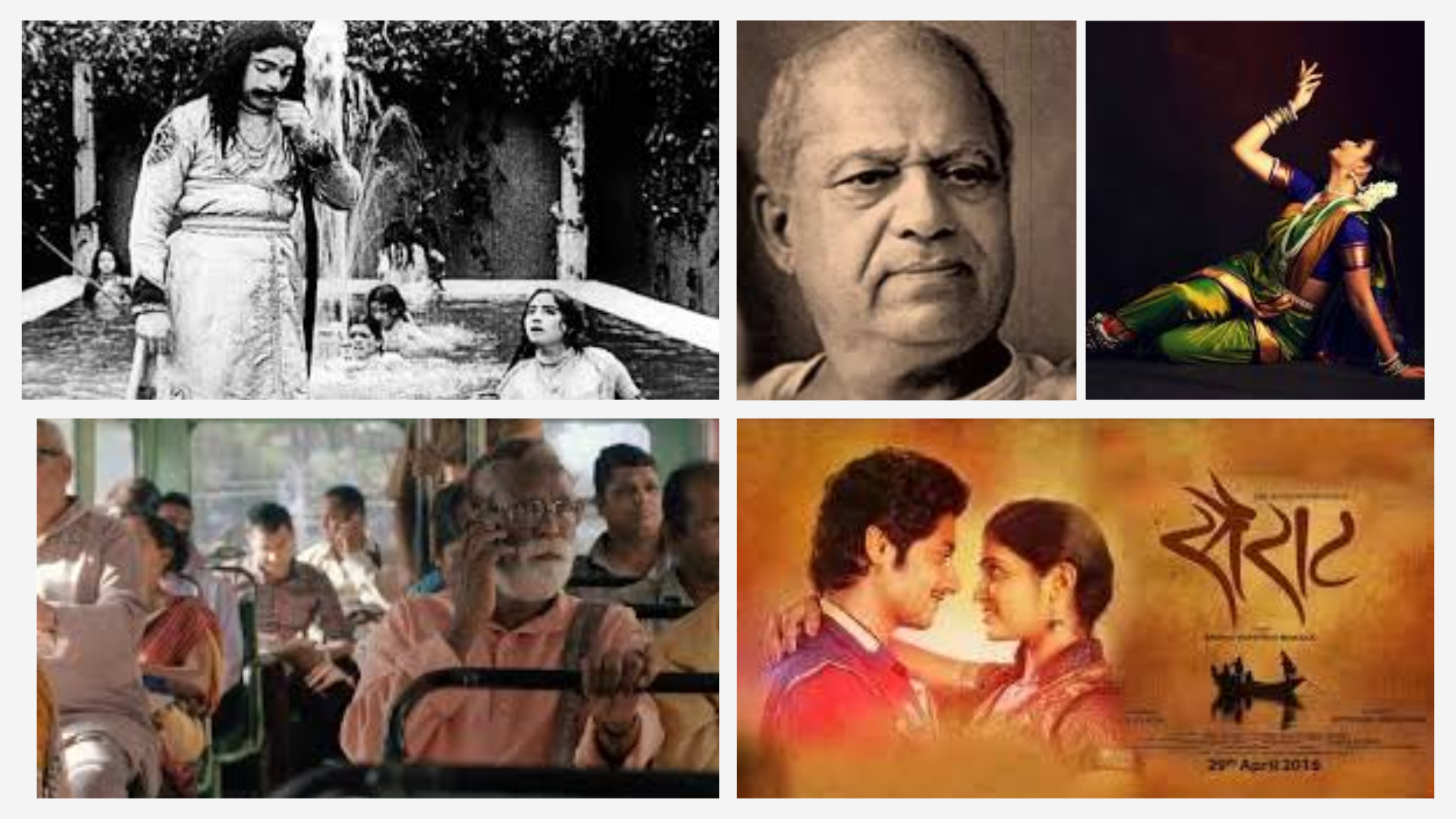Marathi cinema history and impact
Marathi cinema holds a significant place in Indian cinema’s history. From the birth of Indian filmmaking to modern-day blockbusters, the Marathi film industry has made remarkable contributions. With its roots in rich cultural heritage and socially relevant themes, Marathi cinema has evolved over time, creating a strong identity for itself. This article delves into some fun and intriguing facts about Marathi films, shedding light on their impact and importance.
The Birth of Indian Cinema: A Marathi Milestone
The story of Indian cinema began with a Marathi film. Raja Harishchandra (1913), directed by Dadasaheb Phalke, was the first full-length feature film made in India. This silent film, based on a mythological story, marked the beginning of an era. Dadasaheb Phalke’s pioneering effort laid the foundation for what would become the world’s largest film industry. Marathi cinema has the distinction of producing India’s first film, making it a crucial part of Indian cinema’s legacy.
Pioneers of Socially Relevant Cinema
Marathi cinema has always been known for addressing social issues through its films. One of the earliest examples is Sant Tukaram (1936), a film based on the life of the revered saint-poet Tukaram. This film not only gained immense popularity but also became the first Indian film to be screened at the Venice Film Festival. It showcased Marathi cinema’s ability to create meaningful content while maintaining artistic excellence.
V. Shantaram, a legendary filmmaker, started his career in Marathi cinema. His films, such as Manoos (1939), tackled societal issues like alcoholism and prostitution. These themes were groundbreaking, as mainstream Indian cinema had yet to explore such topics. Shantaram’s contribution to Marathi films set a precedent for addressing social issues with sensitivity and creativity.
Marathi Cinema’s Triumphs on National and Global Stages
Marathi cinema has consistently earned national and international acclaim. One of the most significant achievements was Shwaas (2004), a film that told the poignant story of a grandfather and his grandson. Shwaas won the National Award for Best Feature Film and represented India at the Oscars, bringing global recognition to Marathi cinema.
Another critically acclaimed film, Court (2014), also won the National Award for Best Feature Film. This courtroom drama, addressing issues of injustice and systemic oppression, received praise worldwide. Marathi films like these continue to push boundaries and resonate with audiences across the globe.
The Making of Harishchandrachi Factory: A Tribute to Indian Cinema’s Beginnings
Harishchandrachi Factory (2009) is a unique film that tells the story of Dadasaheb Phalke’s journey in making India’s first feature film, Raja Harishchandra. The film beautifully captures Phalke’s determination and the challenges he faced. It was India’s official entry for the Academy Awards in the Best Foreign Language Film category, further establishing Marathi cinema’s global appeal.
Embracing Folk Art: Lavani and Tamasha in Marathi Films
Marathi cinema has a deep connection with the region’s folk art traditions, particularly Lavani and Tamasha. These vibrant forms of dance and theater have found their way into many Marathi films. Natrang (2010), a critically acclaimed film, explores the life of a Tamasha artist and brought Lavani into the limelight. With its engaging storytelling and powerful performances, Natrang showcased the beauty of Marathi folk art, earning widespread recognition.
Breaking Box Office Records with Sairat
In 2016, Sairat became a game-changer for Marathi cinema. Directed by Nagraj Manjule, Sairat is a love story that addresses caste-based discrimination. The film struck a chord with audiences, becoming the highest-grossing Marathi film of all time. Its universal appeal led to remakes in multiple languages, including Hindi (Dhadak). Sairat’s success demonstrated Marathi cinema’s ability to transcend regional boundaries and achieve nationwide popularity.
The Power of Experimental Cinema in Marathi Films
Marathi filmmakers have often embraced experimentation, making bold choices in storytelling and themes. Films like Fandry (2013), directed by Nagraj Manjule, focus on the harsh realities of caste-based discrimination. Fandry stands out as a poignant and thought-provoking film that reflects social realities.
In recent years, Marathi films have continued to explore unconventional themes, pushing the envelope on what regional cinema can achieve. This willingness to experiment has earned Marathi cinema a reputation for innovation and creativity.
Rich Tradition of Literature and Theater in Marathi Films
Marathi cinema has often drawn inspiration from the region’s rich literary and theater traditions. Several films have been adapted from acclaimed Marathi plays. One notable example is Natsamrat (2016), based on the play by V.V. Shirwadkar. This film tells the story of an aging theater actor reflecting on his life. With its deep emotional core and strong performances, Natsamrat became a major hit and resonated with audiences.
The interplay between literature, theater, and cinema has enriched Marathi films, making them deeply rooted in cultural heritage while remaining relevant to contemporary audiences.
Spotlight on Women Filmmakers in Marathi Cinema
Marathi cinema has seen significant contributions from women filmmakers. Smita Talwalkar, a renowned actress and producer, made impactful films like Tu Tithe Mee (1998), which explored relationships and family dynamics. Another prominent name is Sumitra Bhave, known for films like Kaasav (2016), which won the National Award for Best Feature Film. Bhave’s films often focus on social issues, mental health, and human relationships, offering a fresh and nuanced perspective.
These women filmmakers have played a vital role in shaping Marathi cinema, bringing their unique voices and stories to the forefront.
Conclusion: The Enduring Legacy of Marathi Cinema
Marathi cinema has carved out a unique space in Indian cinema, consistently delivering meaningful, socially relevant, and artistically rich films. From pioneering the Indian film industry with Raja Harishchandra to achieving international acclaim with films like Sairat and Court, Marathi films have proven their staying power.
With a strong tradition of embracing folk art, theater, and literature, Marathi cinema remains deeply connected to its cultural roots. At the same time, its willingness to experiment and address contemporary social issues ensures that it remains relevant and impactful. As Marathi filmmakers continue to push boundaries, the industry’s future looks bright, promising more groundbreaking films for years to come.
This rich cinematic tradition reflects the spirit, creativity, and diversity of Maharashtra, making Marathi cinema an essential part of India’s cultural fabric.
Here are some more links suggestions that would add to the topic:
- Indian Cinema History: Link to an authoritative page discussing the history of Indian cinema, such as the National Film Archive of India or Wikipedia page on Indian Cinema.
- Dadasaheb Phalke: For more information about the “Father of Indian Cinema,” link to a page like the Dadasaheb Phalke Biography.
- Venice Film Festival: Link to the official site of the Venice Film Festival, where Sant Tukaram was screened.
- Shwaas at the Oscars: To provide more insight into Shwaas being India’s entry for the Oscars, link to the Academy Awards Official Site.
- Sairat Movie: Link to Sairat’s IMDb page or its Wikipedia page for more information about its cast, reviews, and impact (Sairat IMDb).
- Nagraj Manjule: For more about Sairat director Nagraj Manjule, link to his Wikipedia page.
#Marathicinema #HistoryofMarathifilms #Marathifilmindustry #DadasahebPhalke #Sairatmovie #SantTukaramfilm #Natrang #Marathifilmmakers #Marathiexperimentalcinema #ImpactofMarathicinema
Stay Updated with lastest Filmy Fundas @ FilmsNminds









